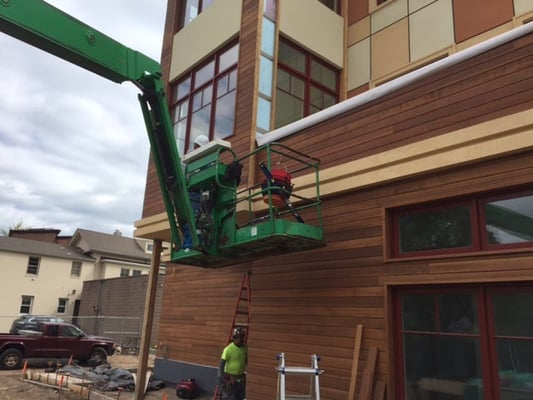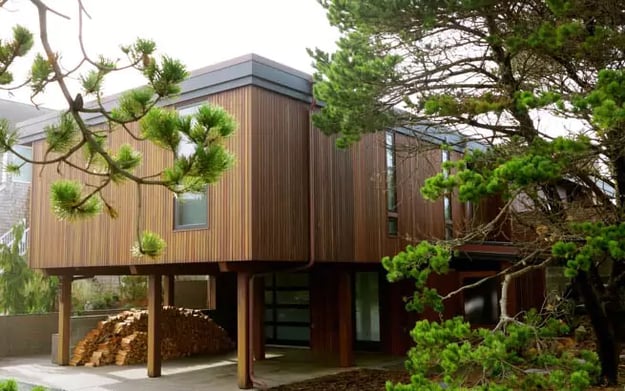
Related Posts



Tongue and groove siding can be installed vertically, horizontally or diagonally. Here are some pro tips and techniques to get the best installation results for an all natural wood. These methods work equally well for exterior siding, soffits, ceilings and wall paneling.

Thermally Modified Hemlock tongue and groove wood siding, fire retardant treated with Thermex-FR
RELATED: Visit Tongue and Groove Wood Siding Project Photo Gallery
In a horizontal tongue and groove wood siding application, start at the bottom and work your way up with the groove edges facing downwards. Siding boards up to 6 inches wide (nominal) can be blind nailed with one siding nail per bearingpoint. Gently toe-nail the siding at a 45 degree angle, through the base of each tongue. Stainless steel nails work best and last longest. If your wood is splitting when you toe-nail it in place, try a narrower shank finish nail.
If you are installing your exterior tongue and groove wood siding or soffit directly over a weather resistive barrier, consider using one of the many 'rainscreen' style WRB's on the market. They will create a narrow gap behind the siding to help minimize mold and rot.

If you are installing your exterior tongue and groove wood siding over furring strips, you will create a more effective rainscreen, because the rainscreen gap behind the siding is wider. For example, if you use 3/4" furring strips behind your siding, you will create a 3/4" rainscreen gap. This will make a more effective protection for your home or structure by further minimizing the potential for mold, rot and decay.

If you like the look of wider siding, such as 1x8 tongue and groove boards, bear in mind that wider boards will have a tendency to expand and contract more than narrower boards depending on moisture conditions. That's why wider boards, like 1x8 (nominal) should be face nailed, using two nails per board at each fastening point. If you're installing the T&G siding directly into studs, or through furring strips, the nails must penetrate at least 1-1/4 inches into solid wood for secure fastening.

RELATED: Request Mataverde SaferWood T&G Hemlock Siding Samples Now
In a vertical T&G siding application, it is best to start at one corner of the structure with the grooved edge toward the corner. Use a plumb line or a level to ensure that your first board is perfectly vertical and horizontally aligned. This step is crucial to maintain the aesthetic appeal of the siding. this helps prevent any misalignment that might occur as you install additional boards, ensuring that the entire installation remains straight and true from start to finish.

The grooved edge of the first board may have to be trimmed to ensure a flush fit. Fasten the siding to horizontal blocking installed between studs, or directly to furring strips. Similar to a horizontal installation, boards up to 6 inches wide (nominal) can be blind nailed. Wider siding boards should be face nailed.
Ready to see if all natural tongue and groove siding meets your project budget?


